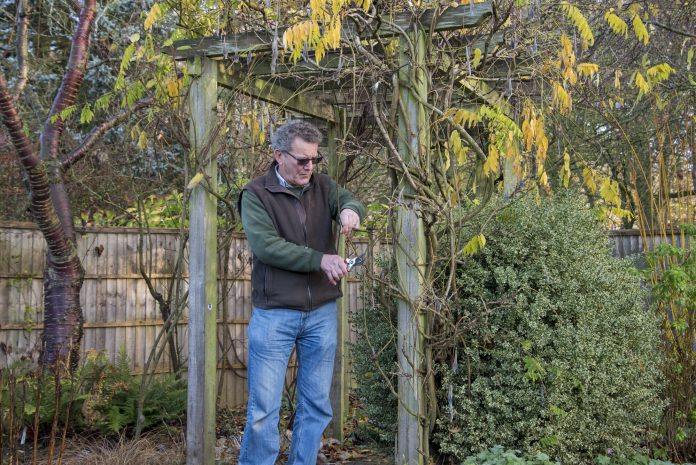Ooohhhhh …it’s nearly here…Christmas! A time for cosy evenings by the fire and wrapping presents next to the tree. But keep your hands off the Babycham for a little bit longer, as there are still jobs to do in the garden, even in December! Take a look at what the Barnsdale Gardens team will be doing this month…these tips are their very own gardening pressie for you!
Check Your Greenhouse
At this time of year, it is important to check your greenhouse or conservatory regularly, picking up any leaves that have dropped, as this will help control disease. Also, keep an eye out for any shoots that may have died back or are starting to die back that can be cut out.
Cover Hellebores
If the weather turns very cold, then there is a chance that the emerging buds of Helleborus niger and its cultivars could sustain some damage, which, no matter how slight, would detract from the beauty of the flower. Therefore, the team likes to cover theirs with a cloche or a bell jar for a short period of time, until the buds begin to unfurl.
Feed Flowering Houseplants
Feed winter flowering houseplants regularly with a houseplant food. This is high in potash and will encourage them into flower and then to produce more throughout winter. These don’t need so much water at this time of year, so be careful not to overwater.
Prune Wisteria
Now that the leaves have turned yellow and started dropping off, it’s the perfect time to prune Wisteria. This year, for a variety of reasons, the team didn’t prune their shoots back to 6 buds. Therefore, they are going for a single prune this winter and cutting back to three buds from the previous year’s growth.
Cover Ground for Early Crops
If you like to get some of your crops started early, such as multi-sown beetroot, carrots, leeks, turnips, etc, then you need to make sure you can. The only way to ensure the ground is in the condition you want it for planting, so not too wet, is to prepare it and then cover the area you need. When you’re ready, you can remove the cover, be it a piece of polythene (for larger areas) or just a cloche, and get planting irrespective of what the weather has been like.
There’s plenty to see and do all year round at Barnsdale Gardens!
Source rabbitattackpr
Photo credit credit Steve Hamilton




